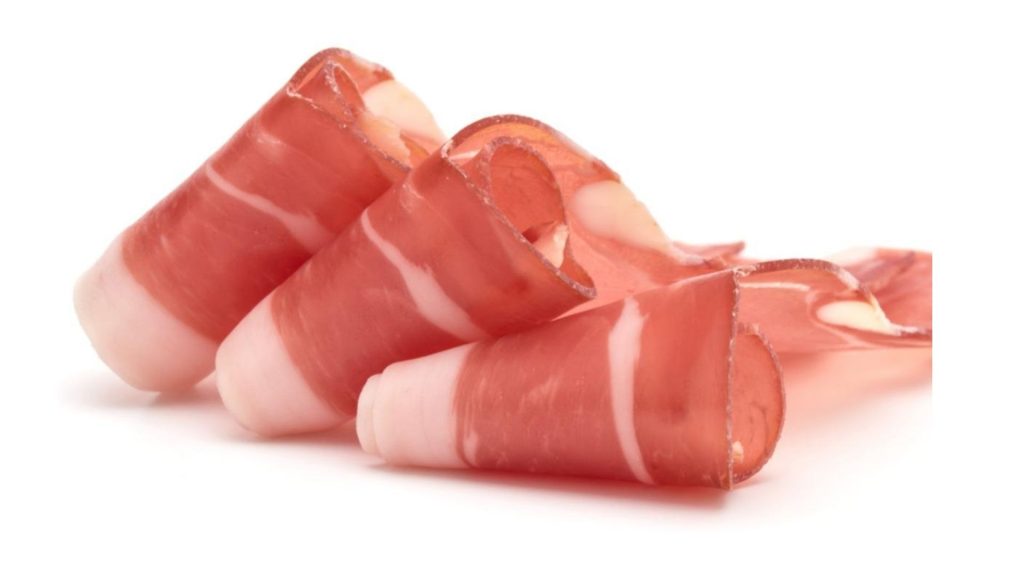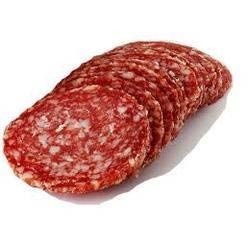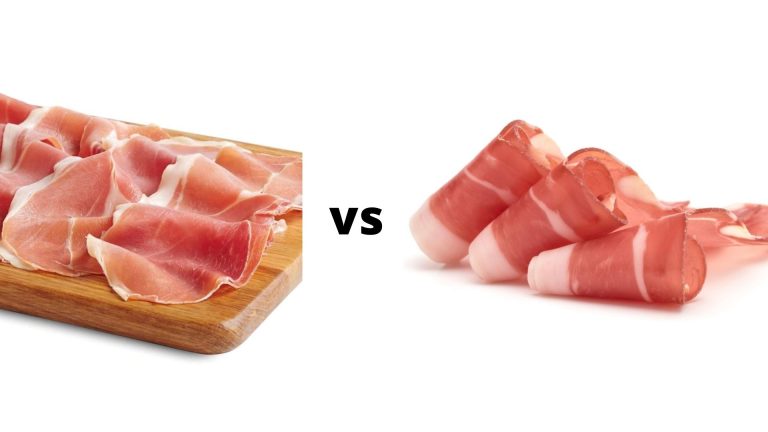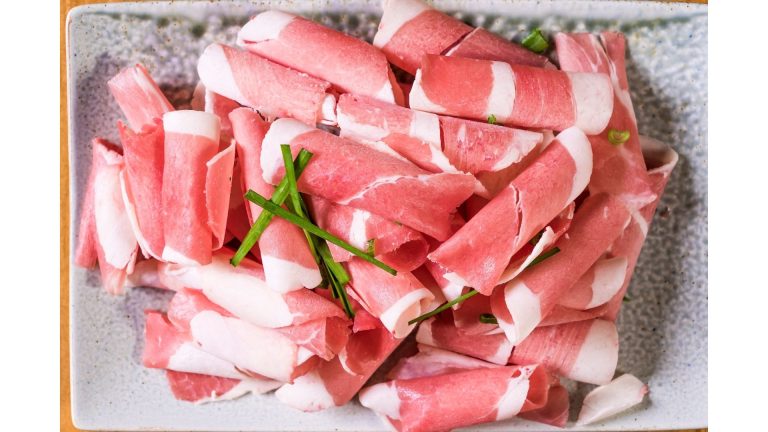Is Prosciutto Healthier Than Salami?
Prosciutto is a traditional Italian salami and is made from pork and/or beef and is cured with salt and spices.
It is made using a special kind of smoking process called “prosciutto” where the meat is slowly smoked over time for approximately ten days.
Salami is a different product and is also made using the same type of smoking process but is not as cured as prosciutto and does not contain salt.
Prosciutto is leaner than salami because it uses fewer ingredients, and therefore, less fat is needed to make the final product.
The saltiness of prosciutto comes from adding more salt to the pork product as opposed to curing it with sodium nitrite, a compound commonly found in salami.
Prosciutto is also typically aged for longer periods compared to salami.

Table of Contents
Prosciutto
What Is Prosciutto?
Prosciutto is simply translated to “ham.” There are three types of ham: raw ham, cured ham and cooked ham.
In Italy, villagers began to dry-age pork legs to increase their meat supply during the long winters.
The tradition of making prosciutto has been going on for hundreds of years. The art of Italy and the world is celebrated today.

How Is Prosciutto Made?
It is made from high-quality pork legs.
The meat is left to rest for a few weeks after it is covered in salt.
It’s safe for us to eat it “raw” because the salt draws blood and water out of the meat and prevents it from being contaminated.
Salting the meat causes it to have a more concentrated flavor.
After the salting process, the pork legs are washed, seasoned by hand, and left to dry age at a controlled temperature for between 14 to 36 months.
It is the combination of salt, air, and time that gives it its sweet and delicate flavor.
There are different techniques for producing prosciutto based on region, producer, and consortium.
For example, Prosciutto di Parma DOP is made from heritage-breed pigs raised in 11 regions of Italy.
In the Parma province, the air and climate impart a unique flavor to the meat, which is why the entire process from salting to aging must occur there.
In the Friuli Venezia Giulia region, Prosciutto di San Daniele DOP can be found. The meat has a sweeter flavor when it is at higher altitudes.
There are many other varieties, such as Prosciutto di Modena, Prosciutto Toscano, e Prosciutto di Carpegna.

What Does Prosciutto Taste like?
It is a sweet and salty product. Each slice is streaked with fat from the salmon pink to brownish-red color.
Some prosciutto varieties are seasoned with herbs like black pepper and garlic, which give it a more unique, fragrant flavor. The more complex it is, the sweeter it will be.
Salami
What is Salami?
Salami is a narrower term involving soft or fresh, cooked, and dry-cured meats.
Italy is believed to have invented the product, and it is thought to have been invented in Ancient Rome.
According to Italy Magazine, there was a 1st-century A.D.
Pork salami has been around for hundreds of years according to the Roman cookbook.
If you’re talking about dry-cured pork sausage that comes in a log and is ready to eat when sliced in the U.S., you’re probably talking about a more modern version that was mentioned in an official Italian document in 1436.
Salami’s basic ingredients are pretty simple, consisting of various cuts of pork that are chopped, ground, and combined with salt and spices before being encased and left to cure.

How Is Salami Made?
Selecting various cuts of pork and grinding them thoroughly is the first thing that needs to be done to make a good mixture of learner pieces.
Salt and flavorings, such as spices, garlic, herbs, or even nuts, are added to the mixture before it is stuffed into a case made out of the pig’s intestines and hung up to dry-cure.
Dry-curing may be an ancient method, but it’s a pretty scientific process according to the University of Melbourne.
The sausage gets its distinct taste from strains of beneficial bacteria, which make the flavor more acidic and help result in salami’s famously pleasant, smooth texture.
The meat is pulled out of the water with the help of salt.
For weeks, months, or years, the process of storing salami in temperature- and humidity-controlled conditions is very important, per ScienceDirect.
The result is worth it, as anyone who has tasted great salami can testify.
What Does Salami Taste like?
All types of salami have the same salty, porky taste no matter what type you buy or how you enjoy it.
The smell may be similar to aged cheese or acidic from the fermentation. Depending on what is added to the salami, more specific flavor notes can be found.
Some may have an anise flavor from fennel seeds, while others may taste spicy from black pepper or chili peppers.
If you are looking for a slightly sweeter, earthier flavor, you may want to add wine or cinnamon to the salami.
If you’re shopping at the store, pay close attention to the seasonings and herbs listed on the packaging to give you a better idea as to what kind of flavor to expect.
If you have a specific use in mind for your salami, you can always ask someone at the counter for a recommendation.
Conclusion
Salami is probably the most famous type of prosciutto. It has been made since the Roman Empire. It is made from pork fat and is cured for months, sometimes even years.
Prosciutto is cured for shorter periods. There are many variations of prosciutto, but the two most common types are dry and wet.
Dry prosciutto has a higher salt content than wet prosciutto.
The average prosciutto contains around 6% salt, whereas salami can contain up to 18%.
So, which is healthier?
Well, if you’re looking for a delicious sandwich, it’s worth buying salami. But if you’re trying to eat healthily, I would recommend investing in some prosciutto.

Foodie and a passionate cook, I am here to share all of what I know about cooking, kitchen, and food prepping.
Follow me for delicious and healthy recipes.







